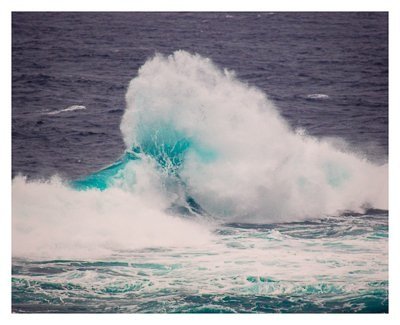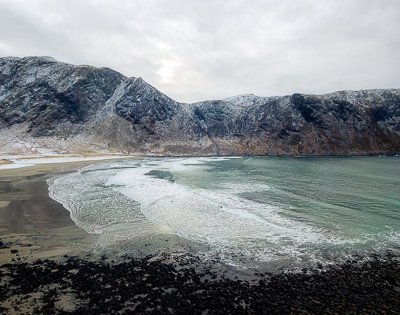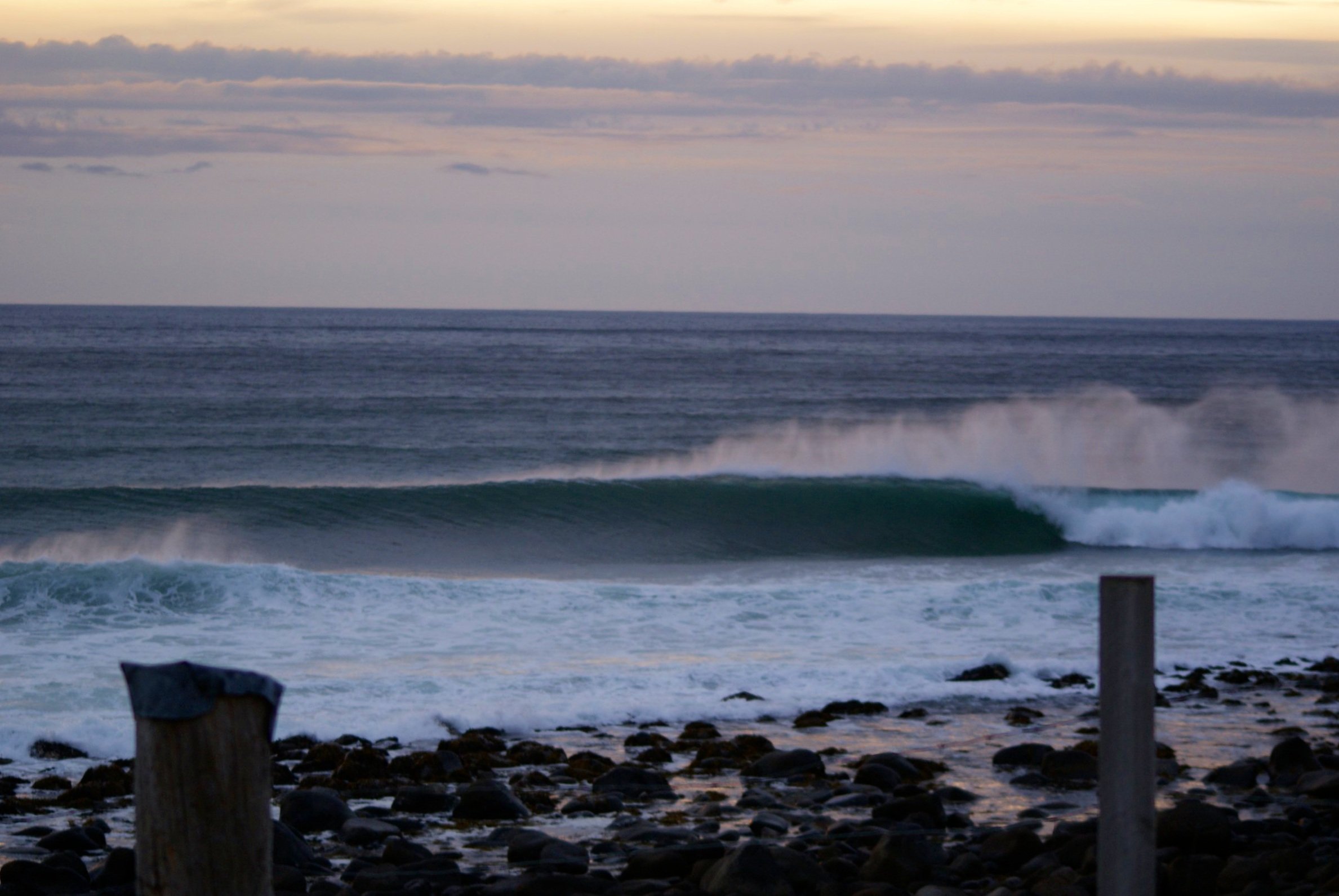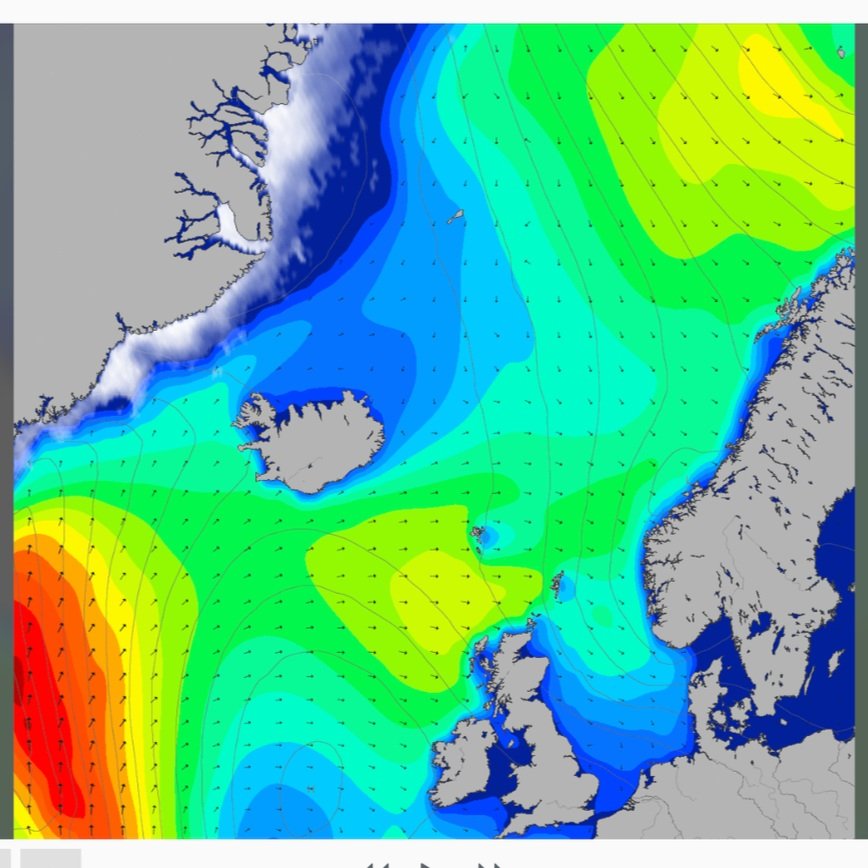Seascape Photography: The Importance of Waves and Swell for Capturing Stunning images
Seascape photography is a popular and challenging genre that requires a deep understanding of the ocean and its movements. Waves and swell are two of the most important factors to consider when photographing seascapes, as they can significantly affect a scene's composition, lighting, and overall aesthetic. In this article, we'll explore the importance of waves and swell when photographing seascapes and provide tips on making the most of these natural elements in your photography.
Waves and swell are the lifeblood of seascape photography, as they provide movement and energy to the scene. By understanding and predicting the movement of waves and swell, you can plan your shoot to take advantage of these natural elements and capture stunning images.
One of the most important things to consider when planning a seascape photography shoot is the size and direction of the waves and swell. Large waves and swell can create dramatic and powerful images, while smaller waves can create a more serene and peaceful scene. By studying wave and swell forecasts, you can plan your shoot for the size and direction of the waves and swell that will best suit your desired composition and aesthetic.
A clean groundswell with offshore wind in the Lofoten islands. Photo; Are Ole Ramstad
How are Waves Created?
Waves are created by transferring energy from the wind to the water's surface. This transfer of energy results in the formation of ripples, which grow in size and become waves. The wind's speed and the distance it travels over the water's surface determine the size and energy of the waves.
The longer the distance wind travels over the water, the larger the waves will be. Additionally, the strength of the wind and the duration of its presence over the water's surface also influence wave size. The faster and longer the wind blows, the larger the waves will be.
How do Waves Move Through the Ocean?
Once waves are created, they move through the ocean in a specific pattern. This pattern is determined by the wind's direction and strength, as well as the ocean's depth and topography. Waves move in a circular motion, with the surface of the water moving in the direction of the wind, while the water below moves in a circular motion, transferring energy as it moves.
As waves move through the ocean, they encounter different types of ocean floor topography, which can alter their direction, shape, and size. For example, when waves encounter shallow water near the shoreline, they become taller and more steep, and they eventually break on the beach.
What is Ground Swell?
Groundswell refers to waves that have travelled a long distance from their point of origin and have a well-defined wave shape. Groundswell waves are typically more extensive and powerful than wind swell waves because they have more time to build up energy as they travel across the ocean. They travel in straight lines, making them ideal for surfing and other water sports.
Groundswell waves can be created by various factors, such as distant storms or the displacement of water caused by earthquakes or landslides. They are also influenced by the ocean's topography, which can cause waves to refract or bend as they move through the sea. This can result in waves moving in a particular direction, creating ideal conditions for surfing in specific areas.
A stormy wave outside the Atlantic ocean road in northwest Norway.Photo: Are Ole Ramstad
What is Wind Swell?
Wind swell refers to waves from local winds blowing over the water's surface. Unlike ground swell, wind swell waves tend to be smaller and less organized, with irregular wave shapes. They also tend to move in different directions, making them less ideal for surfing and other water sports.
Because local winds create wind swell waves, they are more likely to be affected by changing weather conditions. This means that wind swell waves can change quickly and unpredictably, making it challenging for water sports enthusiasts to plan their activities around them.




Another essential aspect to consider when planning a seascape photography shoot is the lighting. Waves and swell can significantly affect how light interacts with the scene, creating reflections, shadows, and highlights. For example, during high tide, the waves and surges can create reviews that highlight the texture of the water and the clouds in the sky. During low tide, the water is more still, creating a mirror-like surface that reflects the sky and the surrounding landscape.
Waves and swell are essential aspects of seascape photography and can significantly impact a scene's composition. The size, shape, and movement of waves and swell can create different moods and emotions in an image, making it essential to understand their behaviour and predict their movement.
Groundswell and wind swell are two types of waves that can impact the composition of an image. Groundswell waves are typically large, well-organized, and can travel great distances across the ocean before arriving at the shore. They move in straight lines and are ideal for surfing and other water sports. On the other hand, wind swell waves are created by local winds blowing over the water's surface and tend to be smaller and less organized than ground swell waves. They also move in different directions, making them less ideal for water sports.
In addition to ground swell and wind swell, the direction of the wind can also impact the appearance of waves in an image. When the wind blows offshore, meaning it is blowing from the shore out to sea, it creates a clean, smooth surface on the water and can cause waves to break further from the shore. This can make a more dramatic appearance as the waves are taller and more powerful.
A perfect groundswell in Unstad bay, Lofoten islands. Photo: Are Ole Ramstad
Conversely, when the wind blows onshore, meaning it is blowing from the sea towards the shore, it creates choppy, disorganized water, making the waves appear less dramatic. In this scenario, waves tend to break closer to the shore and may seem less powerful, but they can still create a sense of movement and dynamism in an image.
To plan your shoot, it's essential to research the area's weather conditions and forecasted wave and swell conditions. Websites and apps such as https://www.surfline.com/ or https://magicseaweed.com/ provide information on wave height, swell direction, and period, allowing you to plan your shoot to take advantage of the ideal conditions.
The three key factors to look at when predicting waves are:
Swell size: This refers to the height of each wave as it moves through the ocean, however, there are also other factors that will play a role in how big the waves will be when they hit the coast.
Wave Period: wave period indicates how long a swell has been travelling through the ocean, the longer a swell travels uninterrupted the more power it builds up and this will be a factor in how big the waves are when they hit the coast, wave period is measured between how long there is between each wave in a swell. The wave period is also the determining factor between a ground swell and a wind swell. A swell with a wave period higher than 10-12 seconds is usually considered a ground swell.
Swell direction: The direction in which the swell is coming from when it hits the coast will also play a role in how big the waves will be when they break against the coast. A swell that hits the coast straight on will be bigger or a swell that hits in an angel. Let`s say you are on a stretch of coast that faces northeast, then the ideal swell direction will be northeast.
By understanding the behaviour of waves and swell, you can also anticipate when the best light and tides will occur to capture the most compelling images.
Tips on what to photograph in different swell conditions
The type of swell present in the ocean significantly impacts seascape photography. Other factors such as light, weather, tide, wind, and composition can also impact the quality and style of images captured.
In flat swell conditions, photographers can create serene and peaceful images of the ocean and coastline. To create a sense of calmness and tranquillity, photographers can use a long exposure to blur the waves and capture the movement of the water. They can also use a tripod to keep the camera steady and create a sharp image. Capturing reflections of the sky or objects on the surface of the water can also add depth and texture to the image.
In small swell conditions, photographers can capture dynamic and energetic images of the ocean and coastline. Photographers can use a long exposure to blur the waves and create a sense of movement in the water. Shooting from a distance and using a telephoto lens can also capture the beauty of the waves breaking over reefs or rocks. Capturing the motion of the water with a fast shutter speed can create a sense of action and excitement in the image.
In medium and large swell conditions, the waves become larger and more powerful, making it important for photographers to prioritize their safety. Shooting from a safe distance with a telephoto lens can capture the beauty and power of the waves. Photographers can also use a long exposure to create a sense of movement and drama in the water. Capturing the interaction between the waves and the coastline, such as the waves breaking over rocks or cliffs, can also create dramatic and textured images.
swell chart from magicseaweed. The arrows indicate a swell direction, the colour indicates size and wave period
Knowing the potential risks and dangers of photographing near the ocean is also essential. Large waves and strong tides can create hazardous situations for photographers who are not prepared. Always take precautions, such as wearing appropriate footwear and clothing, checking the tide patterns, and always having a plan for emergencies.
Risks to Consider When Photographing Seascapes
Dangerous Waves: The waves along the coast can be powerful and unpredictable. It's essential to be aware of your surroundings and never turn your back on the ocean. Be cautious when standing on rocks or cliffs, as waves can unexpectedly sweep over them and cause injury.
Strong Tides: Tides can change quickly and unexpectedly, creating dangerous situations for those who are not prepared. Research the tide patterns in your area and plan your photography accordingly. Avoid standing on wet rocks or areas where the tide could trap you.
Slippery Surfaces: Rocks, seaweed, and other surfaces near the ocean can be slippery, especially when wet. Wear sturdy, non-slip shoes with good traction to prevent falls and injuries.
Weather Conditions: Weather along the coast can change quickly; high winds and rain can create hazardous conditions. Always check the weather forecast before heading out and be prepared with appropriate clothing and gear.
To stay safe when photographing seascapes, here are some tips to keep in mind:
Scout the location ahead of time and be aware of the potential dangers in the area.
Stay alert and keep an eye on the ocean at all times, especially when standing on rocks or cliffs.
Avoid taking unnecessary risks, and never put yourself in a dangerous situation to get the perfect shot.
Wear appropriate clothing and gear, including sturdy shoes with good traction and a life jacket if necessary.
Always have a plan for emergencies, and make sure someone knows your location and when you plan to return.
Apps for wave and wind forecasting:
Seascape photography is a beautiful and challenging genre that requires a deep understanding of the ocean and its movements. Waves and swell are two of the most important factors to consider when photographing seascapes, as they can greatly affect a scene's composition, lighting, and overall aesthetic. By studying wave and swell forecasts, considering the effect of waves and swell on lighting and planning your shoot to take advantage of compositional opportunities, you can capture stunning images that showcase the beauty and power of the ocean.
-
Are Ole is an enthusiastic photographer who loves sharing his knowledge and experience with others. He regularly posts tutorials and articles to help others improve their landscape photography skills and post-processing techniques. With a passion for the great outdoors and adventure, Are Ole offers tips and tricks based on his years of experience in the field. Following his guidance, you can learn new techniques and capture stunning shots. Join a supportive community of fellow photographers and grow your skills with Are Ole's guidance. Note: This article was reviewed by GPT-3 for its grammar, spelling, and structure.








